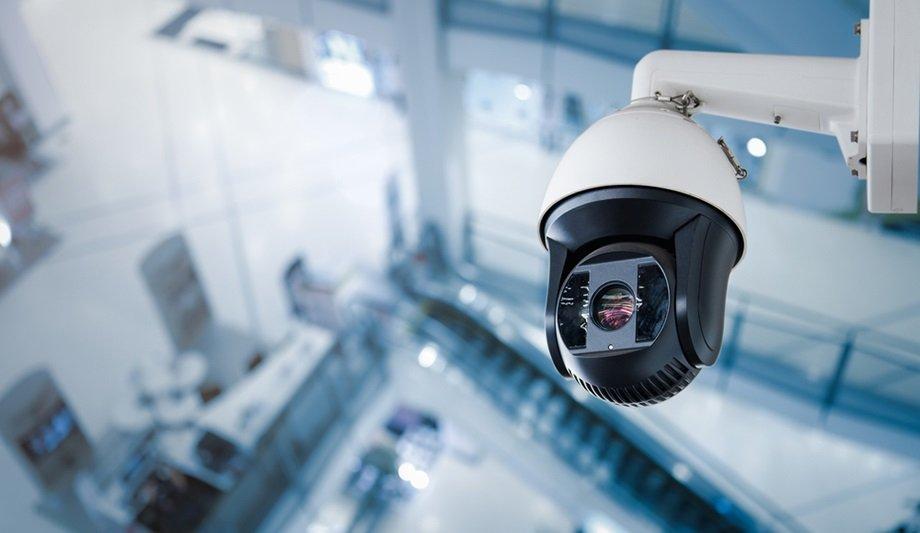With the rise of organized retail crime (ORC) making headlines, retailers are grappling with the dual challenge of safeguarding both their staff and store assets, while addressing the economic pressures that impact profitability and consumer demand.
RFID technology
The key lies in identifying effective solutions to counter the current surge in ORC, enabling retailers to secure their vulnerable staff and protect inventory for paying customers.
Technology plays a crucial role in supporting brands on this mission, with RFID technology continuing to be a valuable solution. It aids retailers in gaining better control over retail crime, leveraging inventory data.
The ongoing surge in retail crime
Inflation has elevated the challenges around affording items, prompting criminals to target the retail sector
Seen as a global issue, the British Retail Consortium recently reported that incidents of theft have increased by 27% across 10 of the largest cities in the UK, with some cities reporting up to a 68% increase.
In the US, retailer Target reported an inventory loss of $500 million for 2023, amounting to a 100-basis point hit to gross margins in 2023. The current surge in theft is not attributed to a singular cause. Inflation has elevated the challenges around affording items, prompting criminals to target the retail sector.
- Lack of preventive measures
A significant contributing factor is the lack of sufficient preventive measures by law enforcement, which in some cases has led to a rise in more severe incidents. However, the implementation of technologies like RFID allows retailers to efficiently build cases against criminals, putting them in a stronger position when it comes to reporting thefts.
Not all retail crimes are orchestrated by large entities or executed through sophisticated methods. Some stores have seen a reduction in staff numbers and, as a result, there are fewer people on the shop floor, making it easier for shoplifters to carry out their activities unnoticed.
The true impact of retail crime
Over 70% of retailers believed the threat of ORC had increased over the past five years, according to a recent survey
The impact of retail crime on businesses extends beyond financial and economic consequences; it has also led to a surge in violence against retail staff, an ongoing trend elevated by the pandemic.
Over 70% of retailers believed the threat of ORC had increased over the past five years, according to a recent survey conducted by the National Retail Federation. This escalation in violence not only results in immediate repercussions but also contributes to long-term mental health issues for staff, fostering an atmosphere of insecurity that has compelled some retailers to close their physical stores.
- Policy implementation
Given the challenge of staff retention across various businesses, addressing retail crime becomes an even more urgent matter.
Additionally, retailers are wary of their employees facing potential danger and the prospect of legal action. Consequently, many have implemented policies prohibiting employees from actively intervening when confronted with shoplifters.
- Privacy concerns with facial recognition
Retail crime also affects customers, as businesses seek to offset losses by raising prices
Retail crime also affects customers, as businesses seek to offset losses by raising prices, further burdening financially strained consumers.
The presence of visible security systems not only makes stores more hostile but also diminishes the overall customer experience. While facial recognition technology is considered a potential solution, privacy concerns have emerged in its various applications.
Today’s problems, yesterday’s solutions
Retailers are resorting to historic measures such as steel cables, physical monitoring, or plastic screens to resolve customer issues.
However, the reality is that these solutions are unfit for solving the problem, causing friction for both customers and staff.
- Digital solutions
The newer approach involves equipping retail staff with body cams and providing new training
The newer approach involves equipping retail staff with body cams and providing new training to deter shoplifters. Some stores are even offering the police discounted food and beverages to encourage their presence.
The responsibility lies with management teams to seek effective solutions. In an era dominated by data and technology, retailers must shift their focus from traditional security methods to digital solutions that align with the challenges of today’s society and modern retail environments.
- Shrinkage
When discussing theft or organized retail crime, retailers commonly use the term "shrinkage," referring to not only theft but the broader issue of lost inventory. Additional drivers of shrinkage include damage, fraud, and internal theft.
A significant problem arises as losses are often based on guesswork and estimates rather than concrete numbers. Retailers may lack a comprehensive understanding of their inventories, further increasing the issue of shrinkage.
Combating shrinkage
Utilizing RFID technology notably helps in boosting inventory accuracy
Some retailers still struggle with limited knowledge of the whereabouts of items, a challenge heightened by the issue of shrinkage. Utilizing RFID technology notably helps in boosting inventory accuracy.
This enhancement enables retailers to obtain a clearer understanding of their inventory and the precise locations of items.
- Comprehensive strategy
Changes in the in-store experience have highlighted the relevance of RFID, especially as self-service checkouts encounter double the shrinkage levels compared to traditional checkout stores.
To combat retail theft effectively, a comprehensive strategy should involve the integration of labels, deactivation, electronic article surveillance, and data analytics. This combination works synergistically to reduce shrinkage and enhance product availability.
- Retail data analytics platforms
RFID data can swiftly alert nearby stores, providing an opportunity for staff to monitor shop floors
Linking hardware to an underlying data analytics platform empowers retailers to make more informed decisions. Retail data analytics platforms delve into alarms, deactivations, and visitor metrics, providing a deeper understanding of theft patterns.
RFID technology drives efficiency by pinpointing frequently stolen items, allowing for the identification of theft patterns. In instances of flash mobs in major metropolitan areas, RFID data can swiftly alert nearby stores, providing an opportunity for staff to monitor shop floors and incoming customers.
- Real-time optimization
The crucial question remains whether both shoppers and retailers are prepared to shoulder the responsibility for these additional precautions.
Nevertheless, these changes leverage data more effectively, optimizing loss prevention strategies almost in real-time rather than relying on biannual inventory counts, therefore transitioning from static to dynamic loss prevention.
- Holistic approach
Striking a balance between security measures and providing a seamless shopping experience is key
In a retail environment, not all items require protection, and prioritizing the safeguarding of the most frequently stolen and valuable items can significantly impact shrinkage.
A holistic approach to retail theft is imperative, considering the entire journey of an item through the retail environment. Striking a balance between security measures and providing a seamless shopping experience is key.
Protection without hindrance
As stores move towards being checkout-free, retail criminals (or ORC gangs) will be presented with lucrative opportunities to steal, so retailers need to be one step ahead by introducing unobtrusive and effective technology solutions. For example, case building can be improved with item-level data.
RFID data offers a more precise means of assessing the value of stolen items compared to relying solely on CCTV. It provides detailed insights into the specific items removed from the store and the timing of these incidents. This proves beneficial in tracking repeat offenders.
- Increased visibility with a proactive approach
The modern retail environment continues to evolve and criminals are never far behind. RFID technology plays a crucial role in minimizing shrinkage by enhancing inventory visibility.
Moreover, it leverages the power of data to stay ahead, enabling better predictions of retail crime and the formulation of prevention strategies. This proactive approach allows for the implementation of more tailored solutions to alter outcomes positively.
Discover how AI, biometrics, and analytics are transforming casino security



























